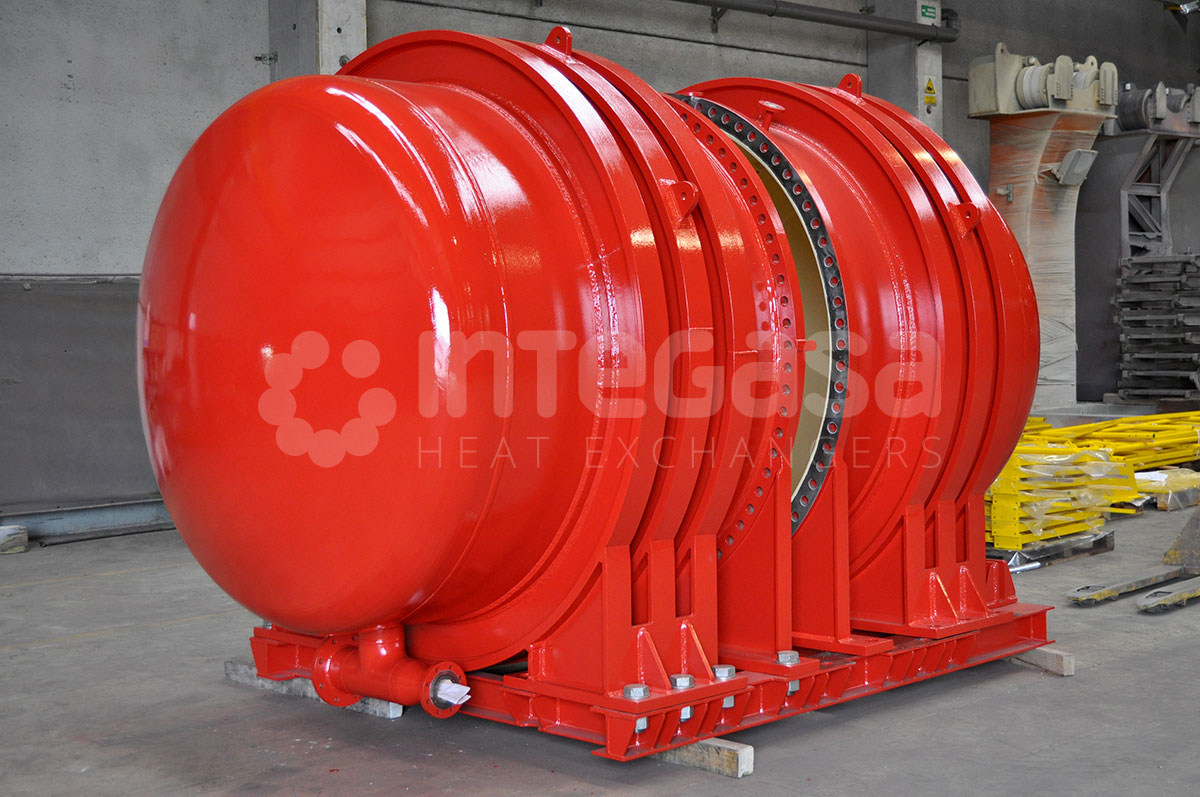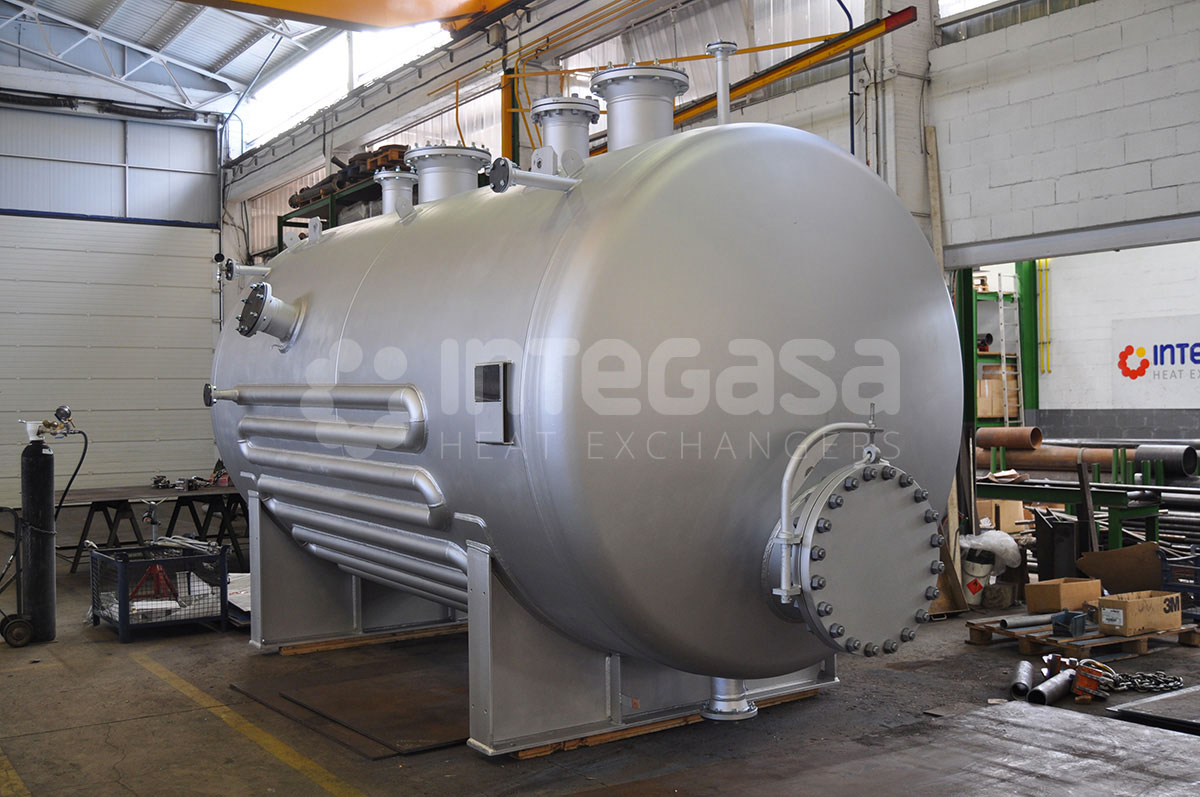PRESSURE VESSELS
DESCRIPTION
A pressure vessel is an industrial container or tank designed for vapours, liquids, or gases at high pressures. Most common pressure vessels are used for the petrochemical, oil and gas, chemical, nuclear and food processing industries; in storage tanks, separators, and heat exchangers. Each vessel has its operating limits built in by design that it has to work under, referred to as its design pressure and design temperature. Most typical geometries are spherical, conical, and cylindrical. Pressure vessels operate at internal pressures higher or lower than air pressure.
Safety is critical in pressure vessels. For this reason, some essential systems and practices cover construction, maintenance and inspection of them. Standards like the American Society of Mechanical Engineers Boiler and Pressure Vessel Code (ASME BPVC) Section VIII, and the American Petroleum Industry (API) 510 Pressure Vessel Inspection Code are the best known in the industry and Integasa also applies. Pressure vessels must follow strict manufacturing standards.
ASME Section VIII of Pressure Vessels and Boilers refers to the one that covers pressure vessels. It provides detailed requirements for the design, manufacture, testing, inspection and certification of fired and unfired pressure vessels.
Different materials are used to manufacture pressure vessels. Carbon steel and Stainless steel are the most common materials, although the types of steel vary depending on the conditions of use.
INTEGASA designs and manufactures pressure vessels since 1974.
BENEFITS
Pressure vessels are designed to function by achieving the level of pressure necessary for the operation of an application, such as air retention in a scuba diving tank. They can provide pressure directly through valves and gauges or indirectly through heat exchange. Potential pressure levels range from 1 bar to about 60 bar, and temperatures are typically above 300°C. The pressure vessel can hold from 75 litres to several thousand litres.
Most pressure vessels are intended for industrial use. Some applications in the private sector are hot water tanks and immersion cylinders. Industrial applications of pressure vessels include distillation towers, hydraulic tanks and liquid gas storage. In industry, pressure vessels can be used for high or low-pressure vessels, depending on the customer’s needs and materials. Industrial plants can also use them for process cooling and heating. Another application is to achieve secondary containment in materials processing. For use with gases or liquids, pressure vessels can be used with electric immersion heaters. Industrial versions of these heaters heat various substances (water, oils, gases and solvents) by direct contact. Immersion heaters mounted in pressure vessels are available with flanged, welded or threaded connections. The combination of electric heaters and pressure vessels is ideal for heating gases and liquids as well as for generating steam.
Pressure vessels are manufactured for a few different industries; industries account for the largest share of the market. These businesses are the oil & gas, chemical or petrochemical, and energy industries.
Integasa has a delivery time for standard pressure vessels of 8-10 working weeks. There are many essential criteria when choosing the pressure vessel best suited to your process. First of all, all process conditions must be well known. In this way, the most suitable design can be created according to the process, and the most suitable material can be selected. But even if all these steps are done correctly, it may be necessary to verify all production steps after the production phase by non-destructive testing. Maintenance should not be forgotten for a certain period after the commissioning of the pressure vessel. It should be noted that a pressure vessel manufactured according to standards is safer. ASME has developed standards recognised in many countries in this respect.










